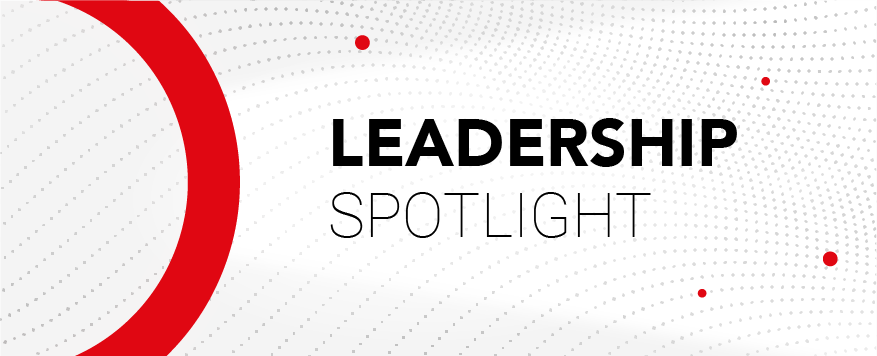
June 18, 2021
AI Leaders Spotlight: The Power of Decision Intelligence in Retail Merchandising
Welcome to our AI Leaders Spotlight where we interview top business leaders on how AI can transform decision-making in key industries. The second interview in our series is with the Director of Merchandise Planning at a leading international beauty brand. He focuses on finding new sales opportunities and managing prices and promotions–all tasks that decision intelligence can enhance.
Decision intelligence (DI) is an emerging method of analyzing historical data to gain valuable action items based on business context. The Director’s current Business Intelligence (BI) tools only provide dashboards of information with no recommendations on what to do next. In this interview, we explore how DI can be used in retail merchandising to create true business value from historical data.
What does a day in the life of a Director of Merchandise Planning look like?
The first thing I do is look at the previous day’s sales results. We need to understand what’s happening in our stores based on our products and marketing. While looking at the previous sales results, we are constantly thinking, “What does this mean for us going forward?” “How are we applying what we’re learning?” We need to determine what actions to take to ensure that I can continue to deliver the sales needed to hit my goals, whether that’s adding new promotions or rolling some back.
How has COVID impacted your sales results and projections?
COVID changed everything for our brands. We had to shut down most of our stores for a couple of months, and we only had our digital channel up and running. One example of how COVID threw us for a loop is when we realized that struggles in our digital fulfillment center (DC) made us halt a promotional sale on our body lotion. With the promotion, the lotion was expected to sell 50,000 units in one day when we only had the capacity to process and ship 25,000 units.
Even if we did have enough inventory, sometimes there’s not enough capacity in our fulfillment center to ship it. These issues can extend our delivery window of a week to a month. A long delivery time can cause customers to look elsewhere for their shopping, making us rethink our shipping process and promotional decisions.
With a DI tool such as Diwo in place, we could have predicted that a promotion would cause a surge in sales, alerting us to stock the digital fulfillment center with more body lotion. DI helps us get a clearer picture of how a promotion impacts inventory and sales, so we can make smarter decisions.
What is one key difference between a manual approach vs. using an AI-driven technology such as Diwo?
We often are looking at all the different attributes of products that are lucrative for us. A challenge we have, especially with a brick-and-mortar business, is making sure we have the right inventory levels in the right stores. Before, we made educated guesses on inventory levels based on our own interpretation of historical data in spreadsheets. That often left us carrying excess inventory and having to run promotions, or on the other end of the spectrum, contending with backorders with our DC.
With DI helping us make inventory placement decisions, we can feel much more confident about each store’s sales plan. This helps us avoid unnecessary promotions, increases customer satisfaction with fast shipping, and drives up our margins. We want our customers to see the value in our products while they are at full price. If my team can get the inventory levels and products right the first time around, it could be a home run for the entire business.
Can you talk about how one decision impacts other parts of the business? How can decision intelligence help with this?
Our company has multiple types of products: makeup, fragrance, and clothing. If we run a promotion in one facet of the business, it could heavily impact the sales of other products.
DI helps us make sure we’re getting the right inventory in the right spots by forecasting what products will be the most popular based on historical data. With DI, we can predict how sales of one product line could or could not cannibalize others based on our existing predictive machine learning models.
What were you doing before discovering DI? What is your primary use case?
Before DI, our process was entirely Excel-based. Our primary use case for a DI tool like Diwo is to have more intelligent, data-driven conversations around the impacts that incremental erosion, new products, and promotional activities would have on the rest of the business. With a decision intelligence tool such as Diwo, we could have the opportunity to find new product and promotion ideas.
What got you most excited about decision intelligence in your day-to-day?
I am most excited about the way DI consumes data and returns answers to us. My team spends an incredible amount of time defining attributes of products so they can be accurately represented in our data and analytics efforts. For example, fragrances have a lot of specific scent profiles that go into one perfume, such as floral, fresh, woody, and sweet scents. DI software can interpret these product attributes so we can get to the bottom of why certain fragrances are selling and why others aren’t down to the regional or store level – it can even help us innovate new fragrances and roll them out to the right demographics.
“DI can enable retailers to get their inventory levels correct on the first try while innovating new product lines and promotional campaigns. With this potential, DI promises to be a home run.”
Director of Merchandise Planning